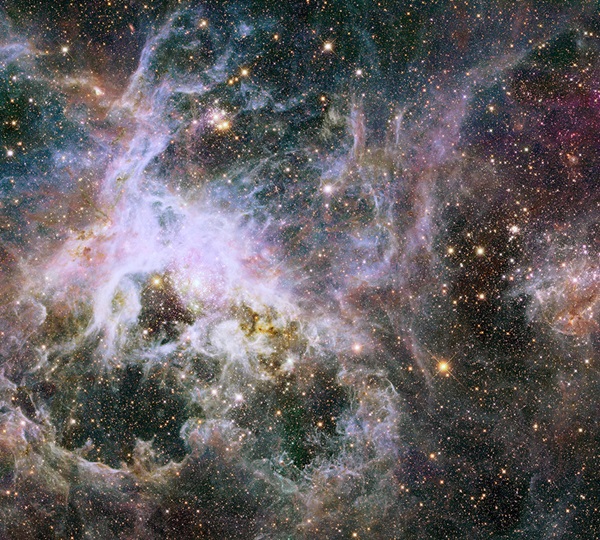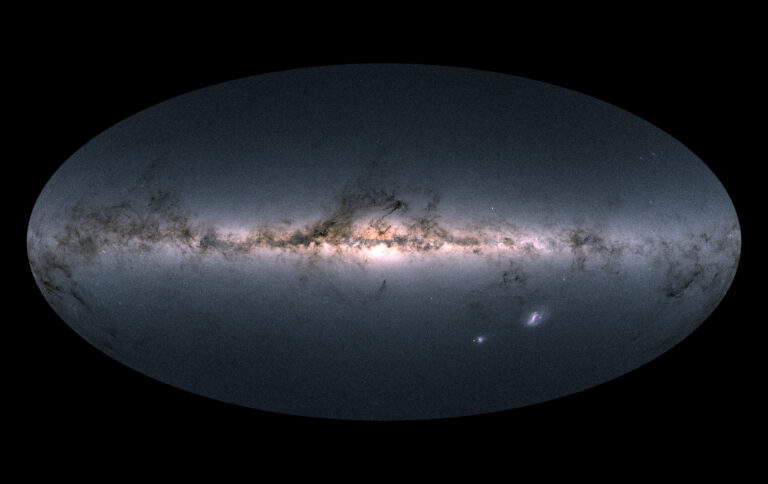Key Takeaways:
- A study using the VLT-FLAMES Tarantula Survey (VFTS) revealed a significantly higher than previously expected number of high-mass stars (15-200 solar masses) within the Tarantula Nebula (30 Doradus).
- This finding challenges existing initial mass functions (IMFs) by demonstrating a greater prevalence of very massive stars than previously assumed, based on analysis of 247 stars within the nebula.
- The revised IMF from the Tarantula Nebula suggests a substantial increase in the universe's overall population of high-mass stars, impacting estimations of supernovae occurrences, chemical yields, ionizing radiation, and black hole formation rates.
- The research indicates the potential existence of stars with masses up to 200-300 times that of the Sun, significantly altering our understanding of stellar mass distribution and its cosmological implications.
Because extremely large stars live hard and die young, they are notoriously difficult to study. Here, the researchers discovered the surplus of massive stars by observing a star-forming region known as the Tarantula Nebula (30 Doradus), which is located some 160,000 light-years away in the Large Magellanic Cloud galaxy. Since this region just began producing stars about 8 million years ago, it is the perfect laboratory for astronomers to study young, massive stars.
As part of the VLT-FLAMES Tarantula Survey (VFTS), the team used the ESO’s Very Large Telescope to gather detailed spectroscopic observations of nearly 1,000 massive stars in the Tarantula Nebula. By meticulously analyzing 247 of these stars (with masses ranging between 15 and 200 times the mass of the Sun), the team was able to determine the mass distribution of stars born in the nebulous nursery. The researchers then translated this catalog of stellar “birth weights” into a mathematical function known as an initial mass function (IMF), which astronomers use to relate a star’s mass to its color, age, and brightness.
Astronomers used to believe that extremely massive stars were somewhat of a rarity in the universe, with less than 1% of all stars being born with masses greater than ten times the mass of the Sun; however, this assumption was based on former IMFs, which were created using plenty of data from low-mass stars, but very little data from high-mass stars.
This study fills out the high-mass segment of the IMF, suggesting that very massive stars are much more common than prior IMFs had indicated. “We were astonished when we realized that 30 Doradus has formed many more massive stars than expected,” said Fabian Schneider, a Hintze Research Fellow in the Department of Physics at the University of Oxford and lead author of the study, in a press release.
Chris Evans, the principal investigator of VFTS and co-author of the study, added, “In fact, our results suggest that most of the stellar mass is actually no longer in low-mass stars, but a significant fraction is in high-mass stars.”
“We have not only been surprised by the sheer number of massive stars, but also that their IMF is densely sampled up to 200 solar masses,” said co-author Hugues Sana from the University of Leuven in Belgium. Only recently have astronomers reached the consensus that 200-solar-mass stars exist, and this study shows that stars can likely be born with masses 200-300 times that of the Sun.
Though this study only examined behemoth stars in one particular region, the researchers soon hope to expand their study to determine how universal their findings are. If the overabundance of fat stars in the Tarantula Nebula is not a fluke, then astronomers will need to reevaluate many of their foundational assumptions about the universe.
“Our results have far-reaching consequences for the understanding of our cosmos: there might be 70% more supernovae, a tripling of the chemical yields, and towards four times the ionizing radiation from massive star populations,” said Schneider. “Also, the formation rate of black holes might be increased by 180%, directly translating into a corresponding increase of binary black hole mergers that have recently been detected via their gravitational wave signals.”










